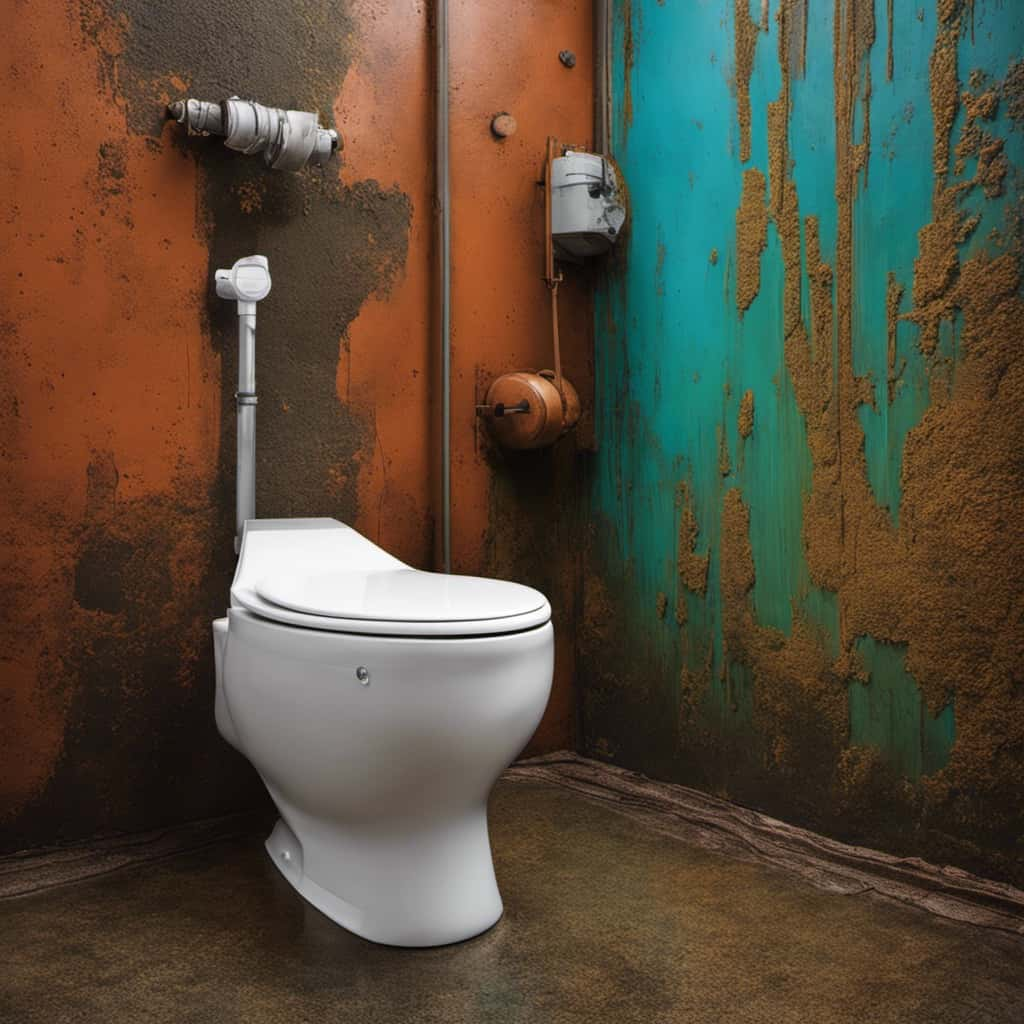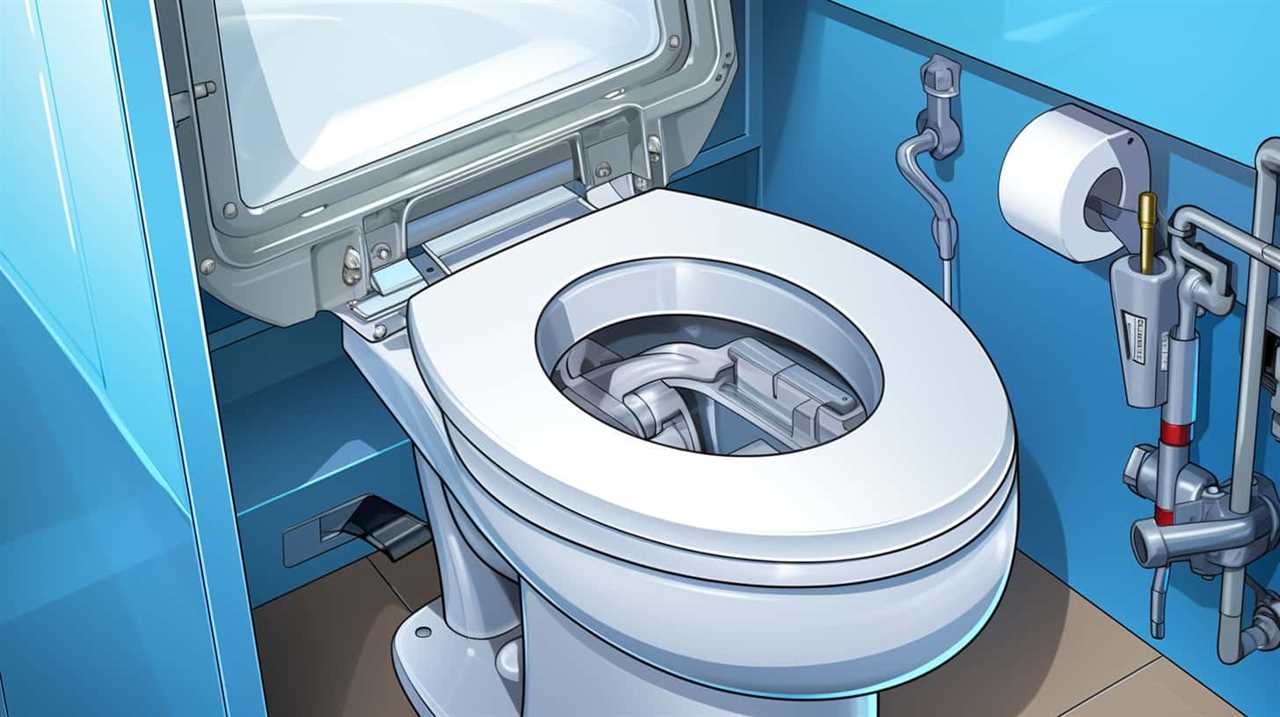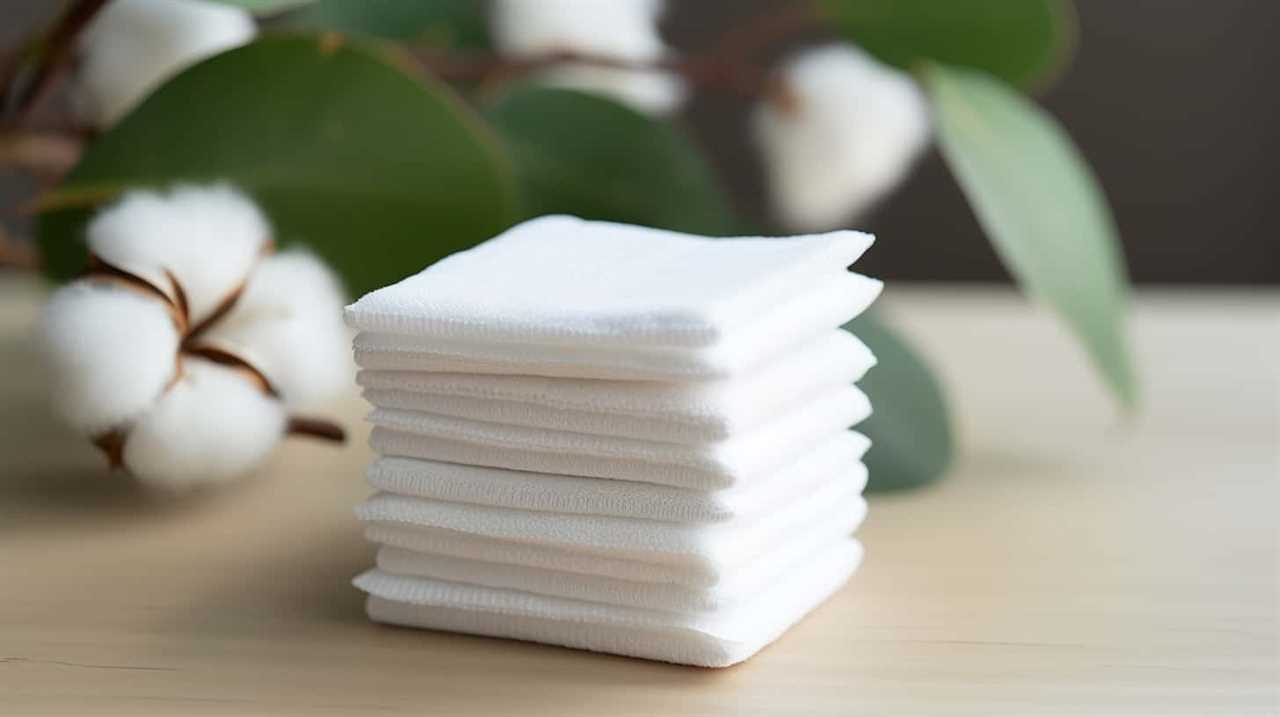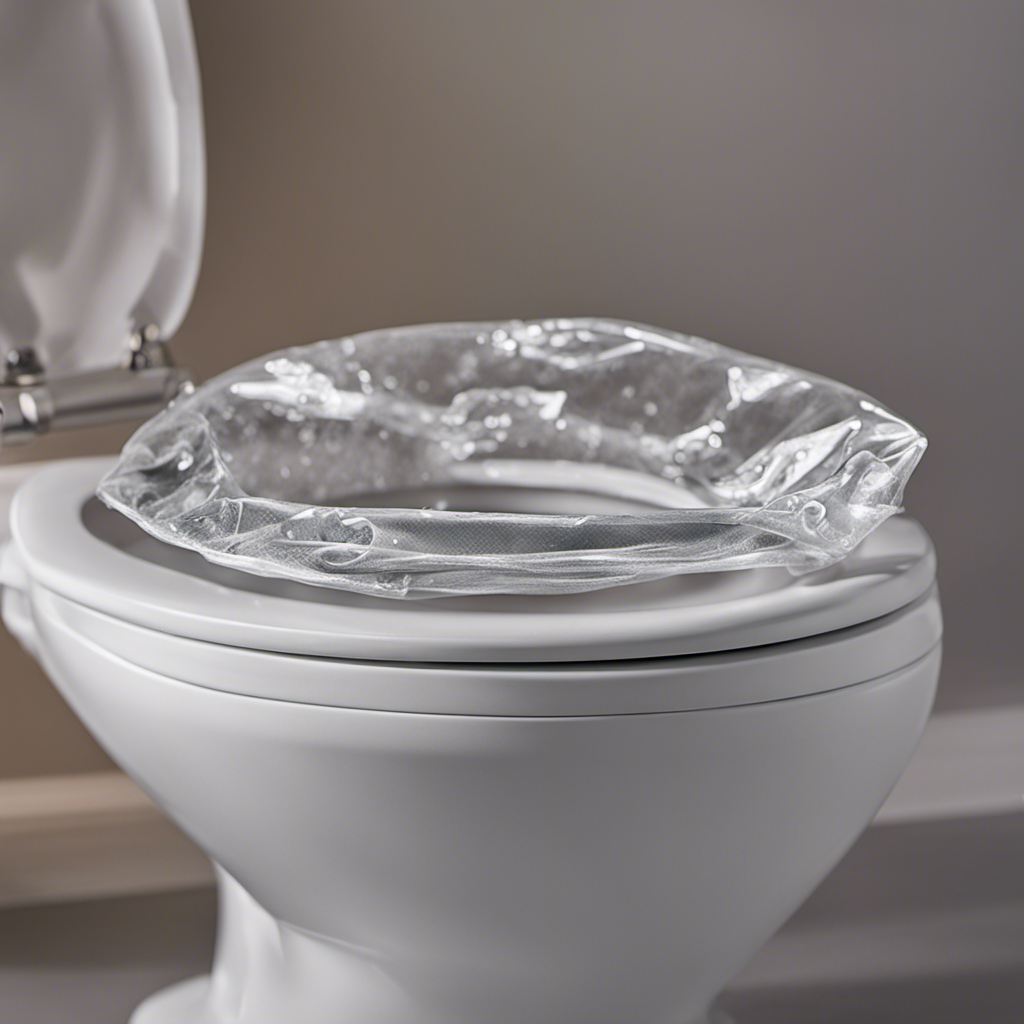Ever wonder what really goes on with your toilet paper after you flush it down the septic tank? Well, hold onto your seats, folks, because we’re about to take you on a wild journey through the mysterious world of wastewater treatment.
In this article, we’ll dive into the breakdown processes, the fascinating work of microorganisms, and the factors that influence toilet paper decomposition.
So buckle up and get ready to become a septic system expert in no time!
Key Takeaways
- Flushed toilet paper undergoes a process of degradation in the septic tank.
- Bacteria and enzymes actively break down the toilet paper into smaller particles.
- Sedimentation causes heavier solid waste to settle at the bottom, forming sludge.
- Regular maintenance, proper usage, and use of biodegradable toilet paper are important for a healthy septic system.
The Journey of Toilet Paper
As we flush toilet paper down the toilet, it embarks on a journey through our plumbing system, guided by water and gravity. Once flushed, the toilet paper enters the sewer pipes, where it joins a network of other waste materials.

The water carries the toilet paper along, pushing it towards the septic tank or wastewater treatment facility. In the case of septic tank waste management, the toilet paper enters the tank, where it undergoes a process of degradation. Over time, the bacteria and enzymes present in the septic tank break down the toilet paper into smaller particles.
These particles eventually settle at the bottom of the tank, forming a layer of sludge. Regular maintenance and pumping of the septic tank are essential to remove this sludge and ensure the proper functioning of the system.
Breakdown Processes in a Septic Tank
- The bacteria and enzymes in the septic tank actively break down toilet paper into smaller particles. This breakdown process is essential for the efficient functioning of the septic tank. As the waste enters the tank, it undergoes several processes that aid in its decomposition. The table below provides a visual representation of the septic tank processes involved in waste breakdown.
| Septic Tank Processes | Description |
|---|---|
| Anaerobic Digestion | Bacteria break down organic matter in the absence of oxygen. This process produces gases, such as methane and carbon dioxide. |
| Sedimentation | Heavier solid waste settles at the bottom of the tank, forming a layer of sludge. |
| Effluent Separation | Lighter waste, including dissolved solids and liquids, rises to the top and forms a layer of scum. |
| Biodegradation | Bacteria and enzymes further decompose the waste, converting it into simpler, less harmful substances. |
Microorganisms at Work
In the septic tank, bacteria and enzymes continue to work diligently, breaking down toilet paper and other waste into simpler, less harmful substances over time. These microbes in action play a crucial role in septic tank biology by carrying out the process of decomposition.
Here is an overview of how they work:

- Bacteria: The septic tank is teeming with various types of bacteria that thrive in the oxygen-depleted environment. These bacteria, such as facultative anaerobes and obligate anaerobes, feed on organic matter like toilet paper, breaking it down through biochemical reactions.
- Enzymes: Alongside bacteria, enzymes also contribute to the breakdown processes in the septic tank. Enzymes are biological catalysts that accelerate the chemical reactions involved in decomposition. They target specific substances, like cellulose found in toilet paper, and break them down into simpler compounds.
These microbes in action ensure that the waste in the septic tank is efficiently broken down, preventing clogs and maintaining the overall functionality of the system. However, various factors can affect this decomposition process, as we’ll explore in the next section.
Factors Affecting Toilet Paper Decomposition
Factors that can impact the decomposition of toilet paper in a septic tank include:
- The pH level
- Temperature
- The presence of chemicals or additives
The toilet paper composition itself plays a significant role in its decomposition rate. Toilet paper that’s made from biodegradable materials, such as recycled paper or bamboo, tends to decompose more easily compared to toilet paper made from synthetic fibers.
The pH level of the septic tank is another important factor. A neutral or slightly acidic pH level is ideal for the decomposition process. If the pH level becomes too acidic or alkaline, it can hinder the activity of the microorganisms responsible for breaking down the toilet paper.

Temperature also affects the decomposition rate. Higher temperatures generally accelerate the decomposition process, while lower temperatures slow it down. The temperature inside the septic tank can vary depending on external factors, such as climate and insulation.
Lastly, the presence of chemicals or additives in the septic tank can impact the decomposition of toilet paper. Harsh chemicals, like bleach or antibacterial agents, can inhibit the growth of bacteria and microorganisms, thus slowing down decomposition.
It is important to note that septic tank capacity also plays a role in toilet paper decomposition. If the septic tank is overloaded with waste, it may not have enough capacity to efficiently decompose the toilet paper. Regular maintenance, proper usage, and adherence to recommended septic tank capacity guidelines are essential for optimal decomposition of toilet paper in a septic tank.
Maintenance Tips for a Healthy Septic System
To ensure a healthy septic system, we need to be proactive about regular maintenance. Here are some important tips to keep your septic system in optimal condition:

- Regular septic tank pumping: It’s crucial to have your septic tank pumped regularly to remove accumulated solids and prevent blockages. This will help maintain the efficiency of your system and prevent costly repairs.
- Proper septic tank additives: Using septic tank additives can enhance the microbial activity in your system, aiding in the breakdown of organic waste. However, it’s important to choose additives that are approved for use in septic systems and follow the manufacturer’s instructions.
Frequently Asked Questions
How Often Should the Septic Tank Be Pumped to Remove Accumulated Toilet Paper?
We should consider pump frequency as part of our septic tank maintenance. Regular pumping helps to remove accumulated toilet paper and prevent potential issues in the system.
Can Certain Toilet Paper Brands or Types Affect the Breakdown Process in a Septic Tank?
Certain toilet paper brands or types can affect the breakdown process in a septic tank. It is crucial to choose toilet paper that is designed to break down easily to ensure proper septic tank maintenance.
Are There Any Specific Guidelines for Using Toilet Paper in a Septic System to Ensure Optimal Decomposition?
To ensure optimal decomposition in a septic system, specific guidelines for toilet paper use are recommended. Understanding toilet paper decomposition and following septic system guidelines is crucial for maintaining a healthy and efficient system.
What Are the Potential Consequences of Flushing Non-Biodegradable Toilet Paper Down the Toilet in a Septic System?
When non-biodegradable toilet paper is flushed in a septic system, it can have potential environmental impacts and hinder septic system maintenance. Proper disposal of toilet paper is crucial to ensure optimal decomposition and prevent system issues.

Are There Any Alternative Options to Toilet Paper That Are More Septic-Friendly?
Sustainable alternatives to toilet paper can lessen the environmental impact of septic systems. Finding alternatives that are biodegradable and septic-friendly is crucial. Let’s explore the options and their benefits.
Conclusion
In conclusion, it’s quite remarkable how toilet paper journeys through the septic tank. With the help of microorganisms, it undergoes a breakdown process that eventually leads to decomposition.
However, it’s ironic that even though toilet paper is designed to break down easily, certain factors can hinder this process.
To maintain a healthy septic system, regular maintenance and proper usage are crucial.

So next time you flush, remember the unexpected journey your toilet paper takes in the septic tank.










